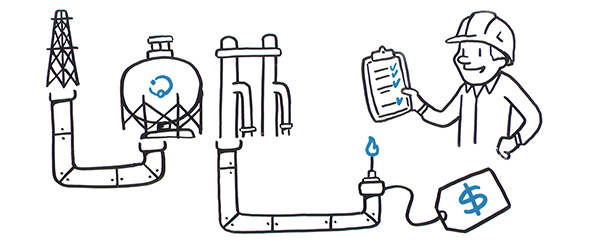How Does The Pipeline Work? [VIDEO]

How Does the Pipeline Work?
You rely on the furnace to kick on when it’s freezing outside, and the burner on the stove to fire up when you need to cook spaghetti for the kids. But...did you ever stop to think about where the natural gas that keeps what matters...warm...actually comes from? ...and how it gets to your home or business?And what it means if you have a supplier like IGS Energy?
Let’s break it down.
Starting with the basics, producers help to extract and process natural gas for transportation through the pipeline. They are responsible for this complex, multi-step procedure to make the gas available for purchase on the open market. Once collected, the gas is ready to be transported through transmission pipelines, which are typically located underground. These run all across the country and together cover more than 300,000 miles. The Local Distribution Company, known as an LDC or more commonly, your utility...is responsible for delivering the gas to your home or business, in both regulated and deregulated states.
The difference is, in deregulated states, you can choose to have the actual natural gas itself be supplied to the utility by another company, known as a supplier. Suppliers like IGS Energy deliver the gas to the city gate, which is the delivery point where it’s transferred from a transmission pipeline to the utility. The utility still delivers the gas to the burner tip, which is your point of use, like a furnace or water heater. With a greater understanding of the ways natural gas gets to your home or office...you can be more empowered to make choices that best meet your needs. Choice drives competition, and even greater innovation in the market.
Check rates in your area